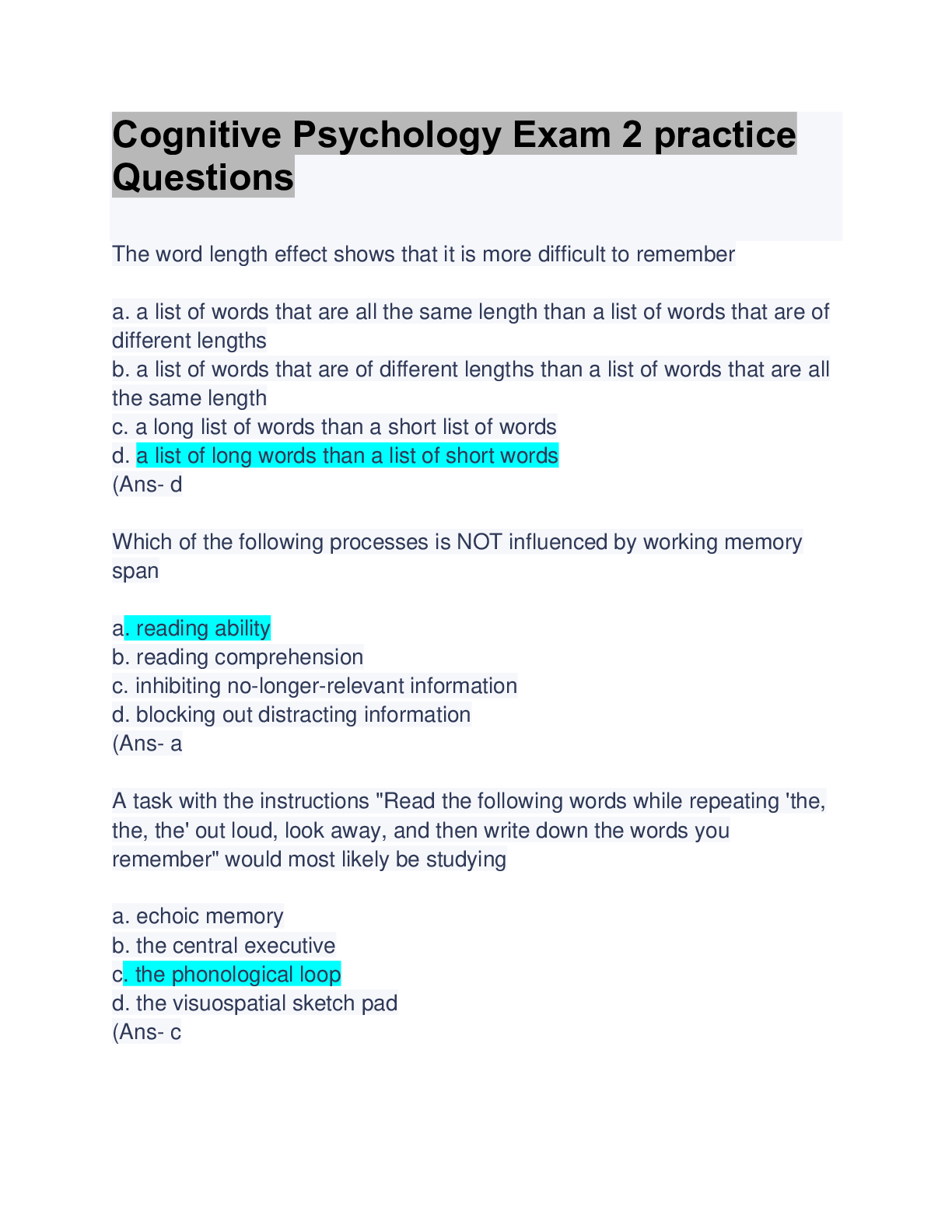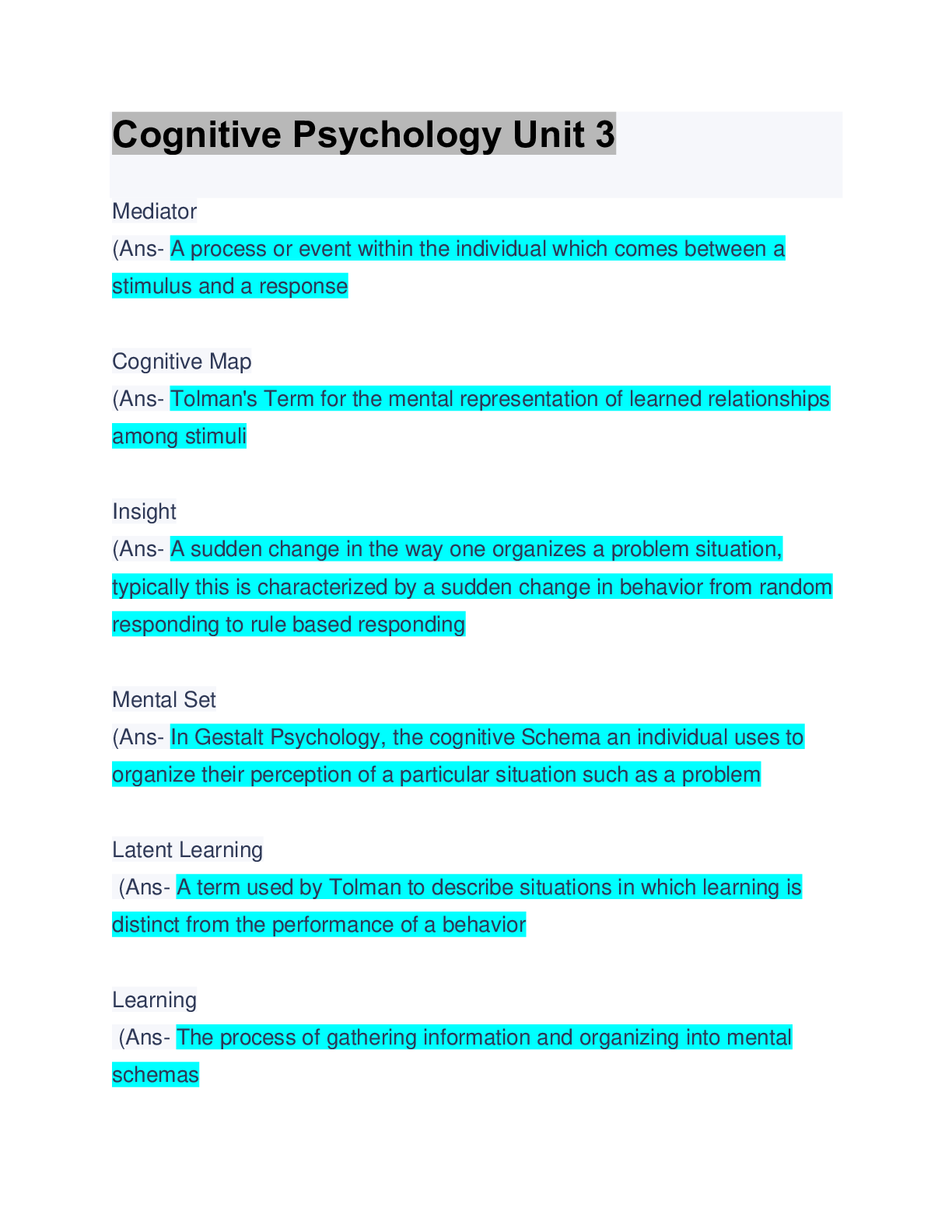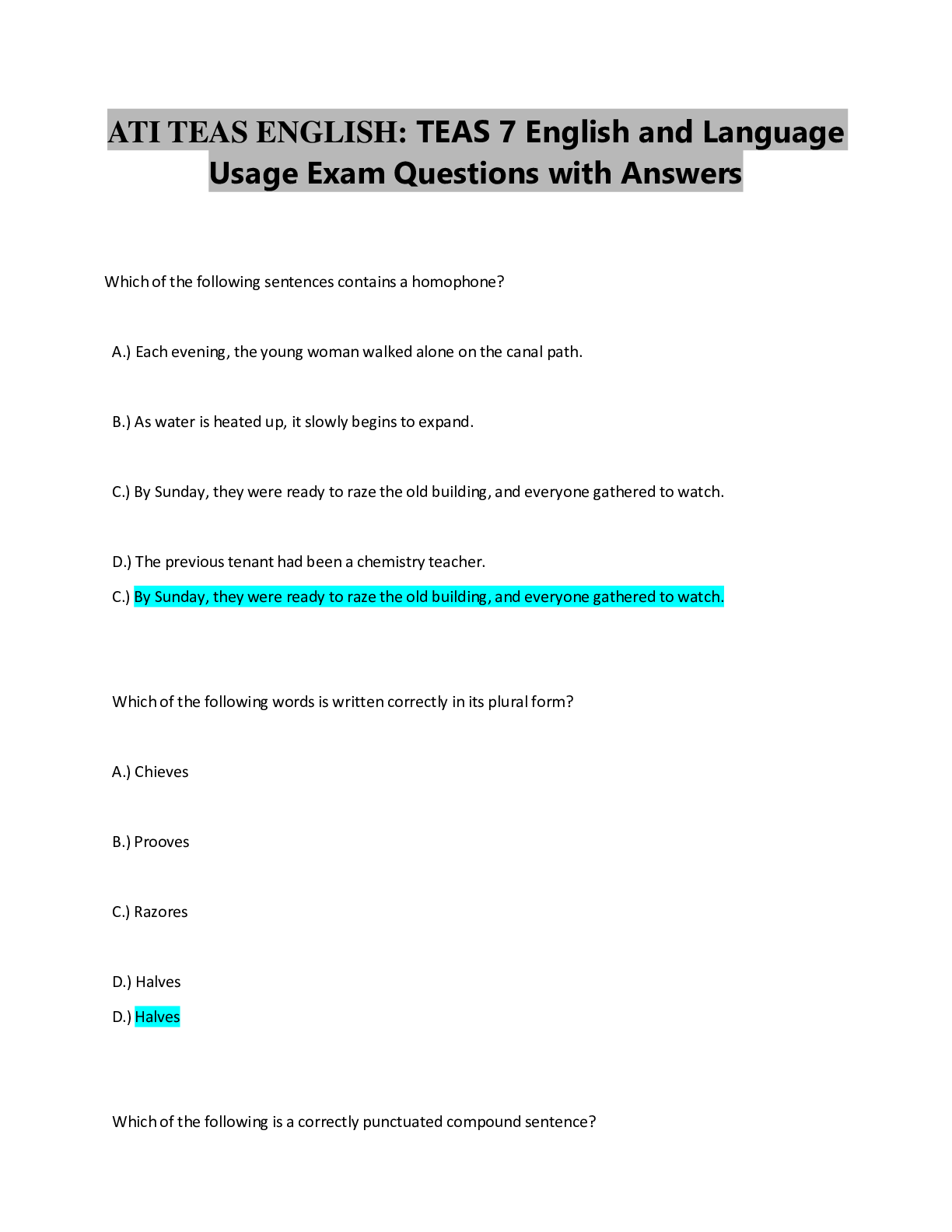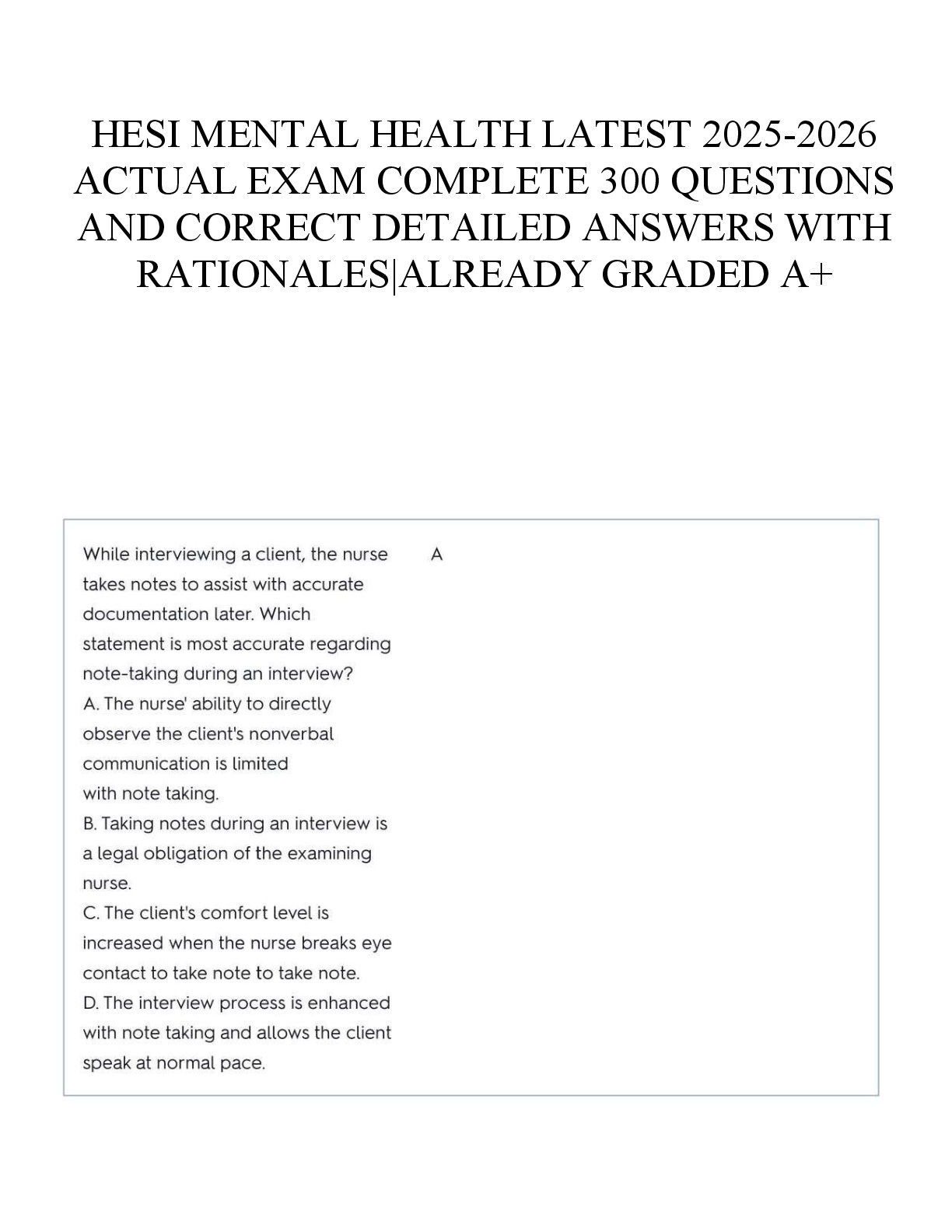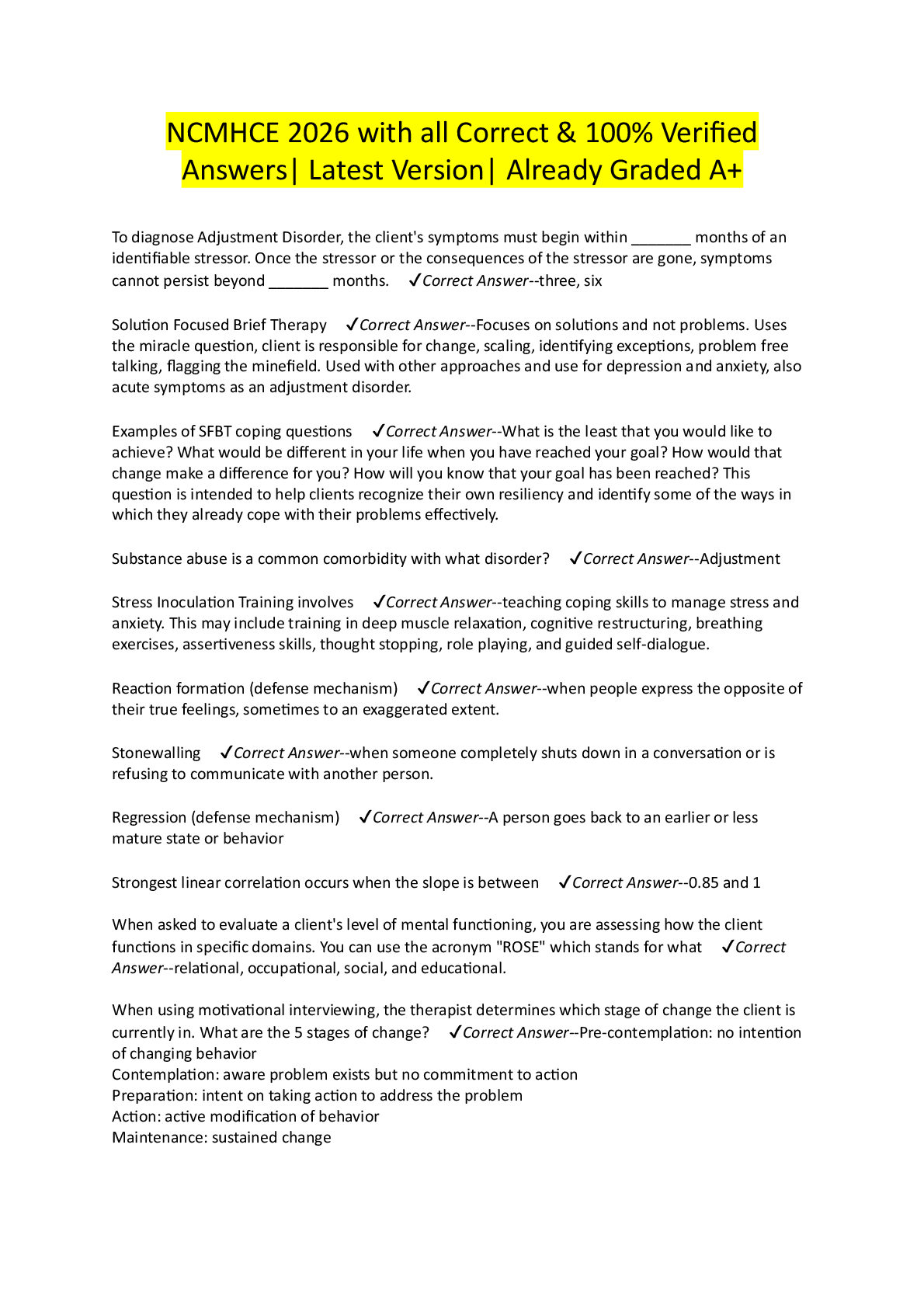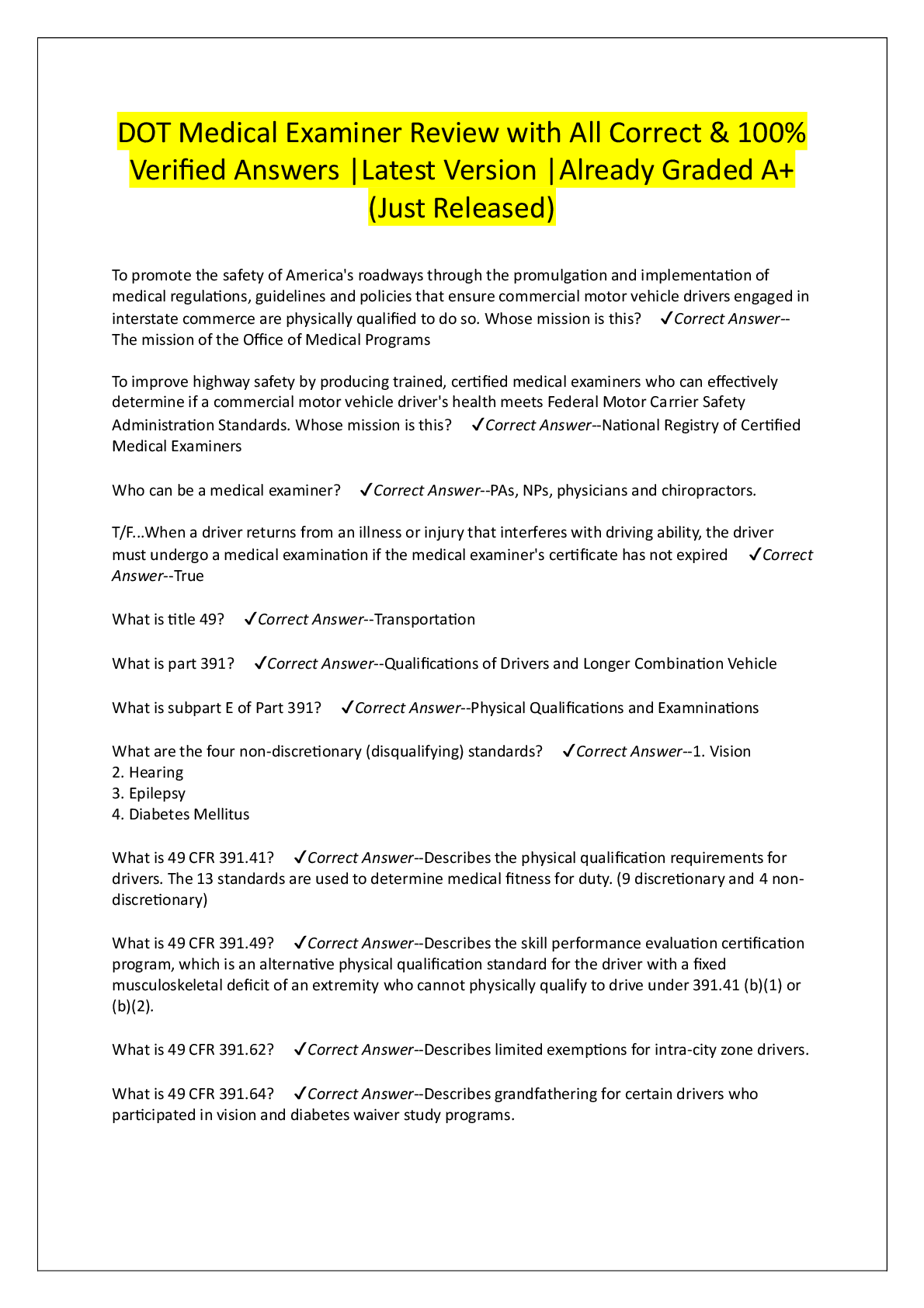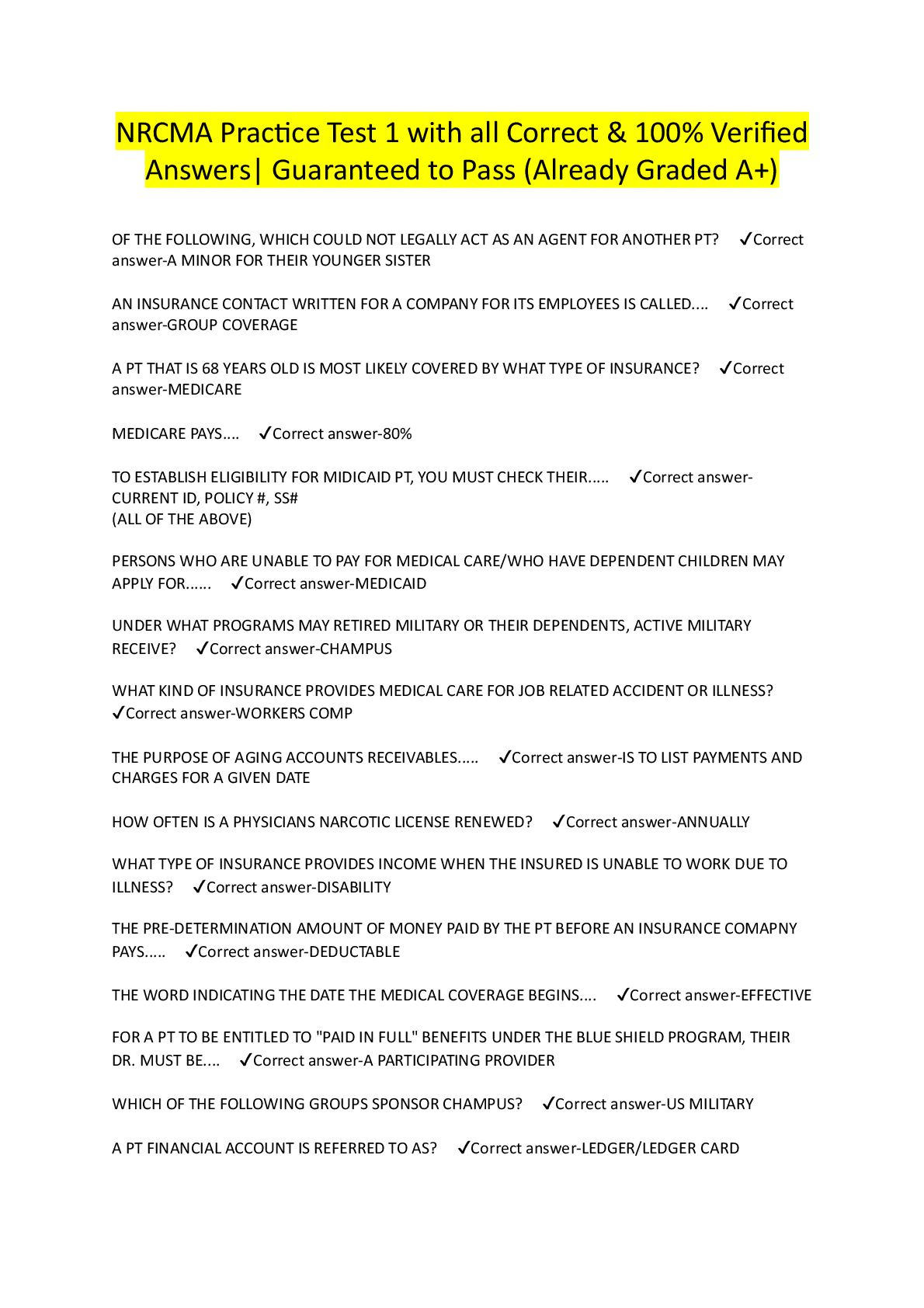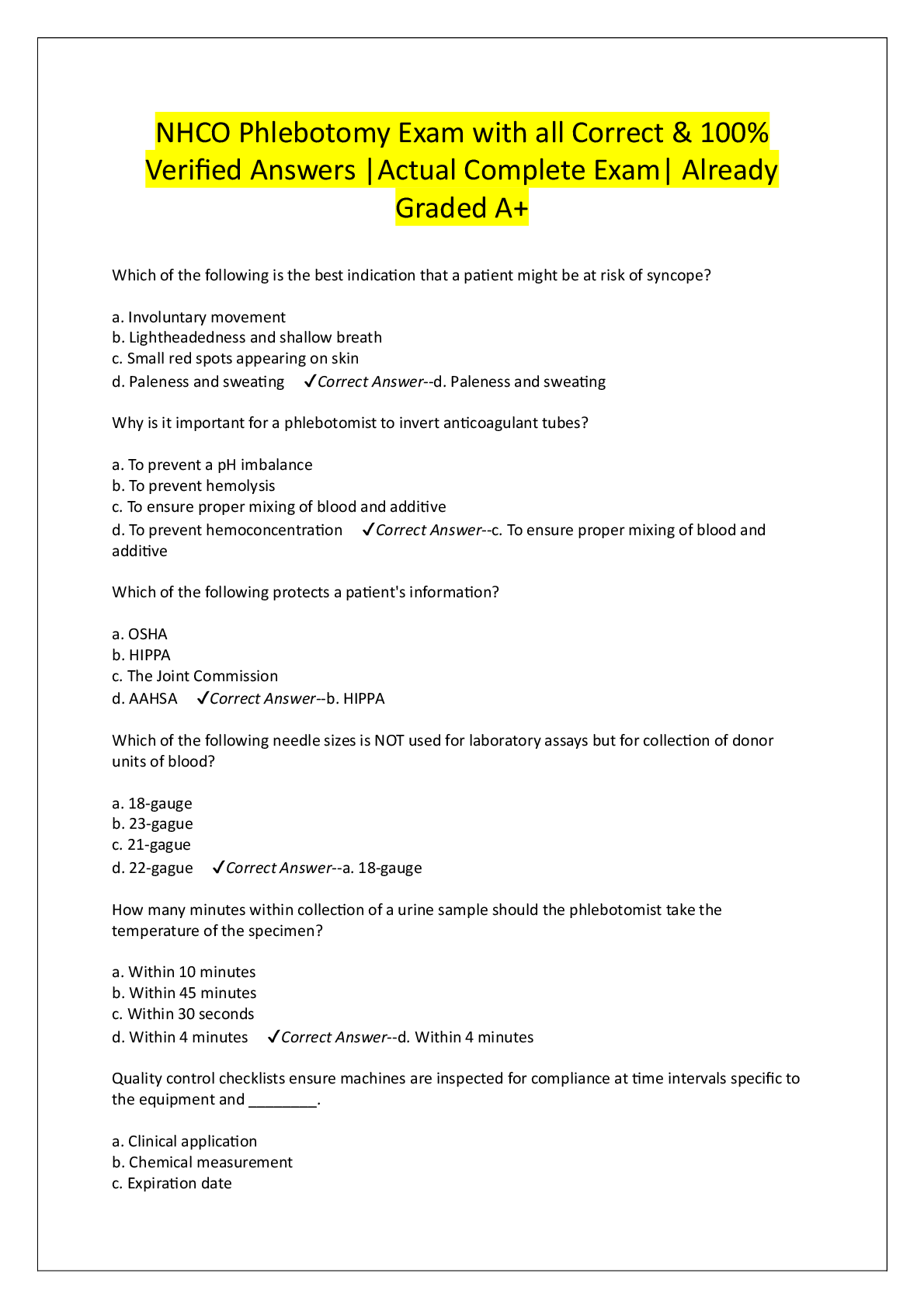Health Care > EXAM > TMC EXAM 4: Questions & Answers: Latest Updated: Guaranteed A+ Score (All)
TMC EXAM 4: Questions & Answers: Latest Updated: Guaranteed A+ Score
Document Content and Description Below
Which of the following equipment is most helpful at measuring FRC in a patient who has significant non-ventilated lung spaces? A. nitrogen analyzer for a nitrogen washout test B. helium analyzer ... for a helium dilution test C. plethysmograph D. peak flow meter ( - The correct answer is : C Explanation : You can determine FRC in three different ways - body box, nitrogen washout, or helium dilution. If someone has non-ventilated lung space, nitrogen washout and helium dilution are not helpful and may be inaccurate. FRC determined by body box will be higher because it can access non-ventilated lung space and therefore is more accurate. The respiratory therapist is making a home visit to evaluate an oxygen-dependent patient. The patient has 3+ pitting peripheral edema and has not followed the physician's orders to limit fluid intake. You would expect which of the following hemodynamic values? A. elevated PCWP with a low cardiac output B. low mean arterial pressure C. elevated right sided preload with a normal to low right ventricular after load D. reduced cardiac index ( - The correct answer is : C Explanation : Right-sided preload is another name for CVP (central venous pressure). Peripheral edema is one of the signs associated with right heart failure, which results in an elevated CVP with a normal or low pulmonary artery pressure (PAP), a.k.a. right ventricular afterload. A ventilator-dependent patient is scheduled for an MRI, which will require a transport of 90 minutes. The patient is receiving humidification with a heated- humidification system. A transport ventilator is available. How should a respiratory therapist assure that humidification will be provided to the patient during the MRI procedure? A. Provide a pass-over humidifier B. Provide an HME C. Provide ventilation with a manual resuscitator D. Use the same humidification system in use on the primary ventilator ( - The correct answer is : B Explanation : A heat moisture exchanger (HME) is appropriate for a transport of only 90 min. Furthermore, the scenario does not suggest that the patient has thick, retained secretions, therefore an HME may be applied. Which of the following conditions would benefit most from polysomnography? A. COPD B. congestive heart failure C. suspected increased airway resistance D. obesity with increased day-time sleepiness ( - The correct answer is : D [Show More]
Last updated: 3 years ago
Preview 1 out of 91 pages
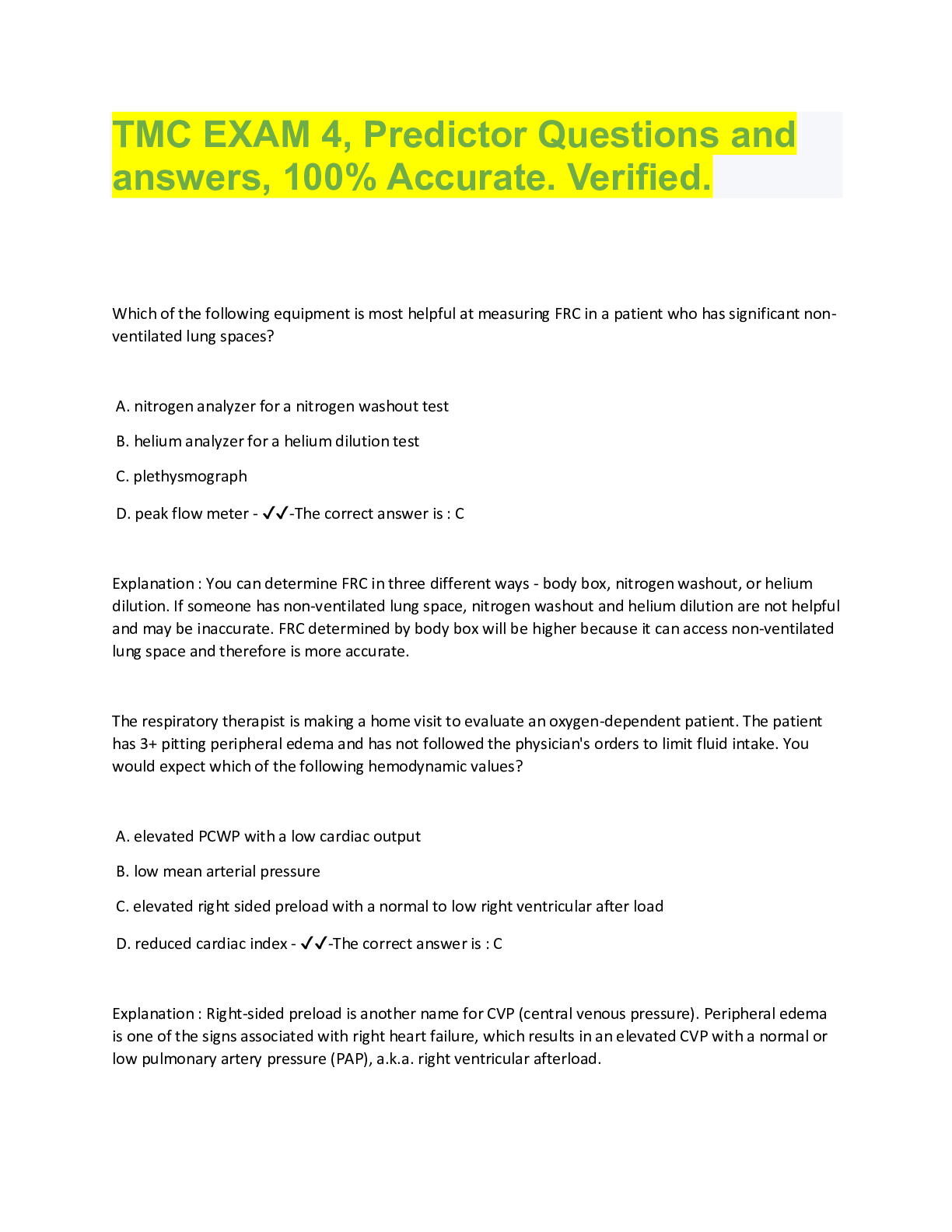
Buy this document to get the full access instantly
Instant Download Access after purchase
Buy NowInstant download
We Accept:

Also available in bundle (1)
Click Below to Access Bundle(s)

TMC Practice Exam A:TMC Practice Exam B Kettering:TMC practice Questions;TMC Practice Exam ( State Board Exam) :TMC State Board Practice Exam:NBRC Mock TMC Exam Review:C&S TMC Exam 1-6: Latest Updated A Score Solutions
TMC Practice Exam A:TMC Practice Exam B Kettering:TMC practice Questions;TMC Practice Exam ( State Board Exam) :TMC State Board Practice Exam:NBRC Mock TMC Exam Review:C&S TMC Exam 1-6: Latest Updated...
By Ace-It 3 years ago
$27.5
13
Reviews( 0 )
$9.00
Can't find what you want? Try our AI powered Search
Document information
Connected school, study & course
About the document
Uploaded On
Dec 08, 2022
Number of pages
91
Written in
All
Additional information
This document has been written for:
Uploaded
Dec 08, 2022
Downloads
0
Views
158


